We are really glad we decided to give ourselves time to absorb the history of Cloncurry and stay the night there. We had also decided we would be better to book into the park as it was the 'Curry Merry Muster Rodeo'...weekend. Good thing we did as the park was full and they were turning grey nomads away late in the afternoon. They obviously thought they could turn up to little Cloncurry late in the afternoon and still get a site! We went to the Friday night Rodeo, and we are now, not pronouncing the word as the Americans do, we have been told the Aussie pronunciation! It is 'Row..d..o'! More of the Rodeo later.After a safe trip from Mt Isa through rocky outcrops for over half of the journey, an early lunch after we had set up in Cloncurry, we visited 'John Flynn's Place'. What an absolutely amazing collection of material there is in Cloncurry. The whole story of the vision, the determination and achievements of this 'Presbyterian Minister' is very well put together. Lots of artefacts, a DVD, various portraits and a number of profiles of 'Flynn's Mob', are all in a magnificent building.
The building has a number of levels. The Museum was opened in 1988 as an 'Australian Bicentennial Project'. The funds were raised throughout Australia by the 'Flynn of the Inland Fund Inc'., a community group formed in Cloncurry in 1986. 'John Flynn Place' is now owned and operated by the 'Cloncurry Shire Council' and in 2000, with the financial assistance of the Queensland Government, new displays were opened. Rev John Flynn, a minister with the Presbyterian Church lived in the Outback for most of his life, setting up hostels and bush hospitals for pastoralist's, miners, road workers, railwaymen and other settlers. He witnessed the daily struggle of these pioneers, living in remote areas where just two doctors provided the only medical care for an area of almost 2 million square kilometres. In 1912 John Flynn was sent by the Church to investigate the needs of people living in the Northern Territory. Travelling vast distances, he found a complete lack of services that city people took for granted.
Communication was slow and difficult. Illness and injury often proved fatal. Flynn's report challenged the Church to improve so much, for outback people. The 'Australian Inland Mission' (AIM) was established, with John Flynn as its first superintendent. With tremendous energy, foresight and enthusiasm, Flynn set about implementing his dream of a 'mantle of safety' that would bring medical, social and religious services to isolated outback communities.Flynn told many stories to illustrate the need for medical care in the outback. Most effective was the story of Jimmy Darcy, a stockman, hurt in a fall near Halls Creek in WA in 1917. The Postmaster was the only person who knew first aid and he knew the injuries were serious. The postmaster was instructed by morse code, through two long and painfall bladder operations with a penknife, by a Doctor in Perth. The stockman died before the Perth Dr could make the 10 day journey. The tragedy was greater than war news in many Australian newspapers and this single event stirred city dwellers to an awareness of the need for hospitals and doctors in the outback.
Flynn was aware of the costs in providing medical services in the outback. Before the concept of an aerial service was fully formed he was lobbying wealthy backers for support. Hugh Victor McKay had made his money manufacturing the 'Sunshine Combine Harvester'. Flynn knew McKay - a staunch Presbyterian - and his sons. They were aviation enthusiasts and they were fascinated by the aerial medical concept. While helping to build a base hospital in Alice Springs, Flynn received news of his friends death. The 'Australian Inland Mission' was to have 2,000 pounds for a one year experimental 'Flying Doctor Service' in Cloncurry, provided that a further 4,000 pounds could be raised by the Church. With the beginning of a financial base, Flynn gathered a team of experts and with his great friend Rev Andrew Barber they went 'bushranging for money'. Flynn's determination meant that at times it happened 'That he was in the Right Place at the Right Time'. One of those times was with an aviation friend who volunteered to go to the assistance of an injured Mt Isa miner in a chartered Quantas plane.
This was an effective demonstration of the future 'Flying Doctor Service'.On May 17th 1928, a Quantas aircraft, with newly painted crosses glowing on the wings, took off from the dusty Cloncurry aerodrome. The small plane was appropriately named 'Victory' and it headed east to Julia Creek. A dream of more than 10 years turned into reality for John Flynn, soon to be known all over the world as 'Flynn of the Inland'. For seven 'experimental years' Cloncurry remained the only 'Flying Doctor Base'. Then Flynn's efforts began to bear fruit. Bases were established at Wyndham, Port Hedland, Kalgoorlie, Broken Hill, Alice Springs and Meekatharra, along with two additional bases in Queensland. One at Charters Towers and the other at Charleville. In 1939 the 'Australian Inland Mission' handed over the Cloncurry Base to the new organisation, the 'Australian Aerial Medical Service' with the 'Flying Doctor' name becoming official in 1942. Queen Elizabeth 2 visited the 'Flying Doctor Service's Broken Hill Base' in 1954 to speak on the radio network and the service was given the royal prefix in 1955.
Flynn's vision finally saw the establishment of the RFDS and 13 flying doctor bases around Australia, which continues to spread 'a mantle of safety' across 6.9 million square kilometres, or 80% of the Australian continent. This is the most comprehensive aeromedical emergency and health care service in the world.After a couple of hours at 'Flynn's Place' we then went to the 'Cloncurry Unearthed Museum'. If you do both you get 25% discount, so the cost for 2 Seniors was $24.00. You do also get 2 days to visit the two Museums. There were quite a lot of artefacts related to the town of Mary Kathleen in the Museum. The town was approximately 40 kms west of Cloncurry and the town developed when uranium was mined there in the 1950's. Over 4,000 tonnes of uranium oxide was extracted between 1958 and 1963. Then the mine lay idle until 1976 when the second phase of production took place. The mine finally closed down in 1982 after another 4,800 tonnes of oxide was extracted. By 1984 the town, mill and mine had been dismantled and the mine tailings rehabiliated.
The site is now suitable for grazing.The Museum also has information on the 'Burke & Wills Expedition' and copies of diary entries of both Burke and Wills. They also have 'Burke's Water Bottle'! Well maybe they do! They do say on the card underneath the bottle, that it may be a replica. The original water bottle is supposed to be in the 'National Museum' in Canberra. Surely the real one is there! The one in Cloncurry doesn't look like it has been used much, or otherwise it has scrubbed up very well! Burke named the Cloncurry River after his cousin Lady Elizabeth Cloncurry and eventually the town took its name from the river. The town was officially proclaimed in 1884. Not a huge town but it does claim to have the biggest payout in prize money on the Australian Professional Rodeo Association (APRA) circuit. It is also in drought and I did find an article on the internet where they were considering evacuating the town in February of this year, because of the lack of water. The Mayor had said "It would be a last resort to do so"! Obviously they have been successful in their endeavours for an adequate water supply.We decided to finish the Cloncurry experience with a few hours at the 60th Anniversary 'Curry Merry Muster Festival'. It is the highlight of the year for Cloncurry residents and the major sponsor is the 'Ernest Henry Mine'. The 'Cowboys' and 'Cowgirls' come from all over Australia. Well no one from the west, but all the other States. Cloncurry have a brand new Equestrian Centre and the festival is held over 4 days. Rodeo's are BIG over here. Next week is the 'Isa Rodeo'. Everyone had their BIG hats on, BIG belts, BIG boots and the gals had plenty of studs and sparklies on their jeans! They hugged every curve as well! Those Cowboys are mad, when it comes to riding the bulls and the bareback and saddle bronc riding. You really do have your heart in your mouth as soon as they open the gate, hoping that no one will be injured. The horsemen that ride alongside the beast, enabling the cowboy to drag himself off and onto a horse, are extremely skillful. I enjoyed watching the way they handled their horses and released the straps from the beasts. The straps make the bull and broncs buck! There were Steer Wrestling, Team Roping, Breakway Roping and Rope and Tie events.
It got quite cold by the end of the night, windy and dirty. Little boys were having a wonderful time rolling down the rise in the red dirt. Riders took little notice of the Committees request to not exercise their horses in the camp yard and that ensued that there was plenty of dirt flying around. You can't really blame them for wanting to exercise the horses. Some had travelled big distances and my goodness were there some impressive horse floats and trucks! We were filthy dirty by the time we went back to the caravan, but glad we had supported the event. It was quite an experience! 14 Photos

 Cloncurry, Queensland, Australia
Cloncurry, Queensland, Australia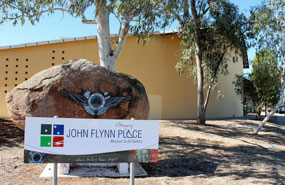
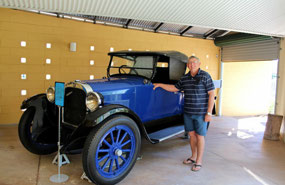
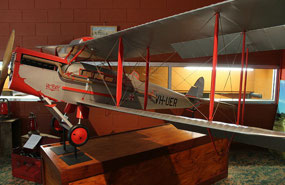
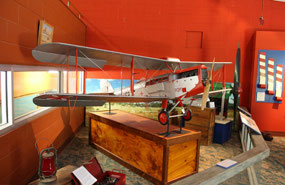
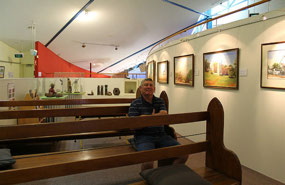
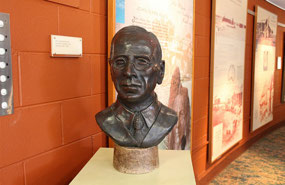
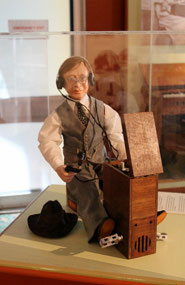

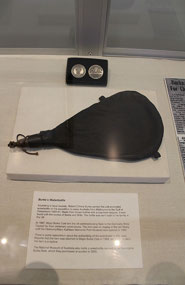
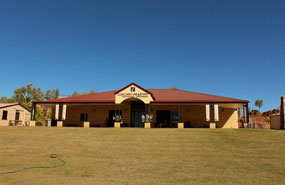
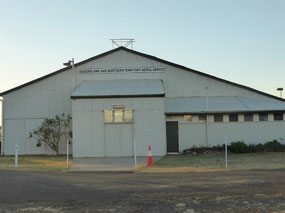
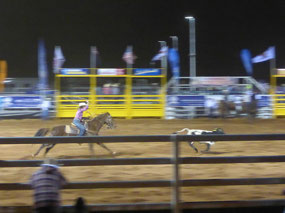
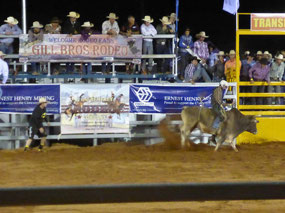
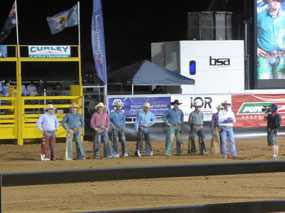
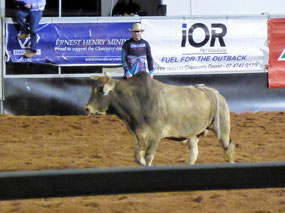
2025-05-22